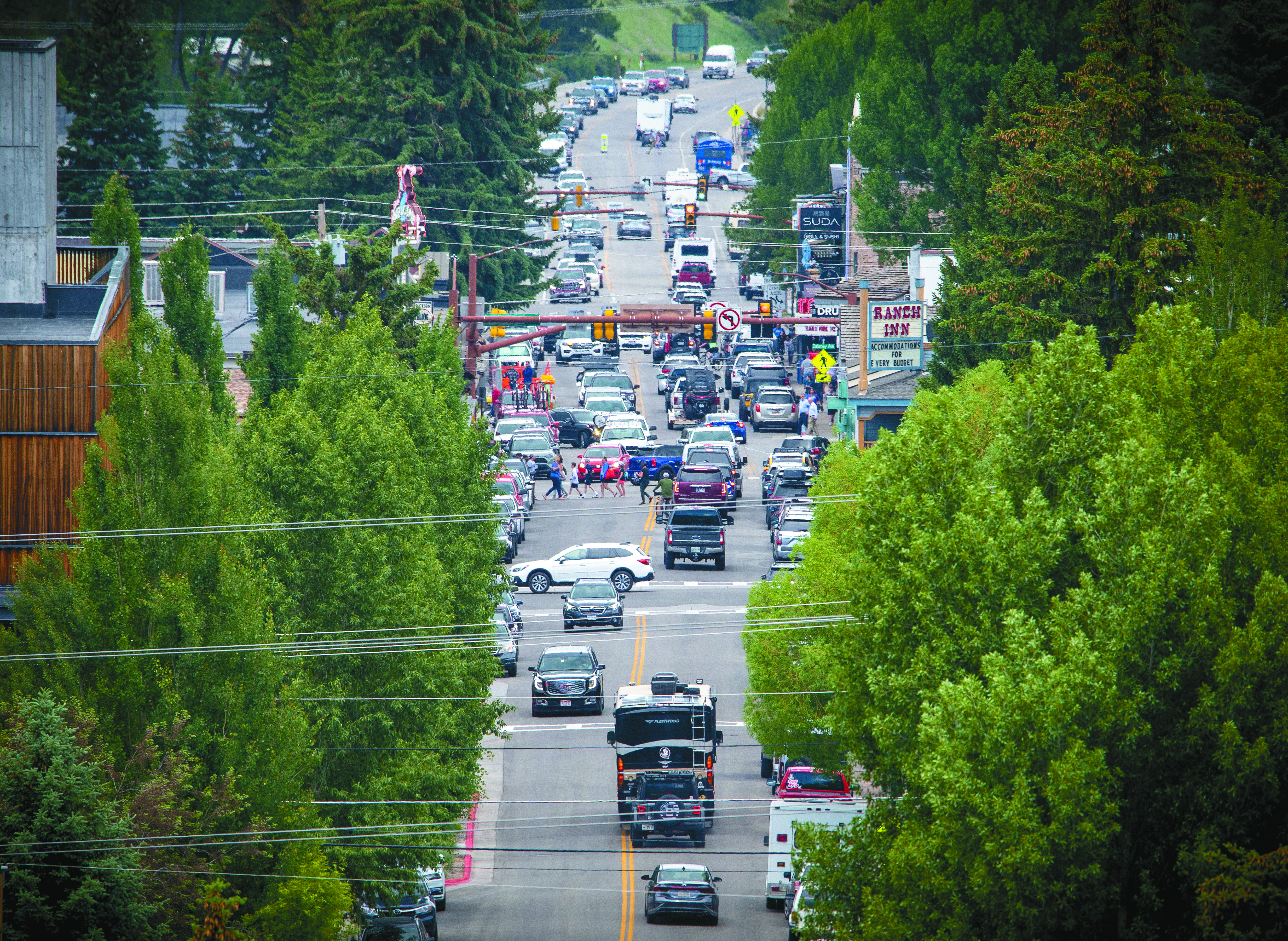Read The
Current Issue
Responsible Tourism
What it is, why it’s important, and how to do it in Jackson Hole.
// By Molly Absolon

“I never go to [Grand Teton National Park] anymore in the summer, unless it is very strategic, say after 5 p.m.,” says Liz Alva Rosa, who has lived in this area since the 1990s. “I never go to the Town Square or to any restaurants in the summer. I plan my grocery store runs in between the morning ‘buying-things-before-your-adventure’ crowd and the regular craze.” As for the traffic: “The line of cars coming into Jackson from the park in the evening is nuts, and getting across town is super annoying, not to mention the traffic on Highway 22,” Alva Rosa says.
The number of visitors to Jackson Hole in the summer of 2021—when many Americans who otherwise might have vacationed abroad were not able to because of Covid travel restrictions—was record breaking. Cell phone records for that July indicated there were as many as 50,000 visitors in Jackson every day. This was about five visitors for every one resident and marked a 50 percent daily increase over any other time on record. Visitation in nearby Grand Teton and Yellowstone National Parks also reached record levels. No one could keep up with the rush. The crowds were less bonkers in 2022, but not by much. According to the Wyoming Office of Tourism, the state saw a 5.2 percent decrease in its total number of overnight guests that year over 2021, but remember that 2021 was an all-time record. “The level of tourism is currently incompatible with regular living,” Alva Rosa says.
Overtourism—defined as an excessive number of tourist visits to a popular destination or attraction, resulting in damage to the local environment and historical sites and in poorer quality of life for residents (and one of the Oxford English Dictionary’s words of the year in 2018)—has been on Jackson Hole’s radar since before the pandemic. More recently, talk about overtourism has shifted to talk about responsible tourism.
Last year the Jackson Hole Travel and Tourism Board—a volunteer board appointed by elected officials, tasked with balancing tourism with the preservation of the valley’s natural capital and community wellbeing, and funded by a percentage of the 5 percent lodging tax collected on every visitor’s hotel, motel, and rental-property stay—conducted a survey of residents as part of a process to develop a sustainable destination management plan for the area. The survey garnered close to 5,000 comments. Eighty-five percent of respondents felt tourism was growing too rapidly, and 90 percent supported more focus on sustainable and responsible tourism and destination management rather than visitor promotion. A 2021 poll of Jackson Hole Chamber of Commerce members found that two-thirds of them also wanted to see this shift in focus.
But what exactly is responsible tourism and how does a community go about making it the norm?
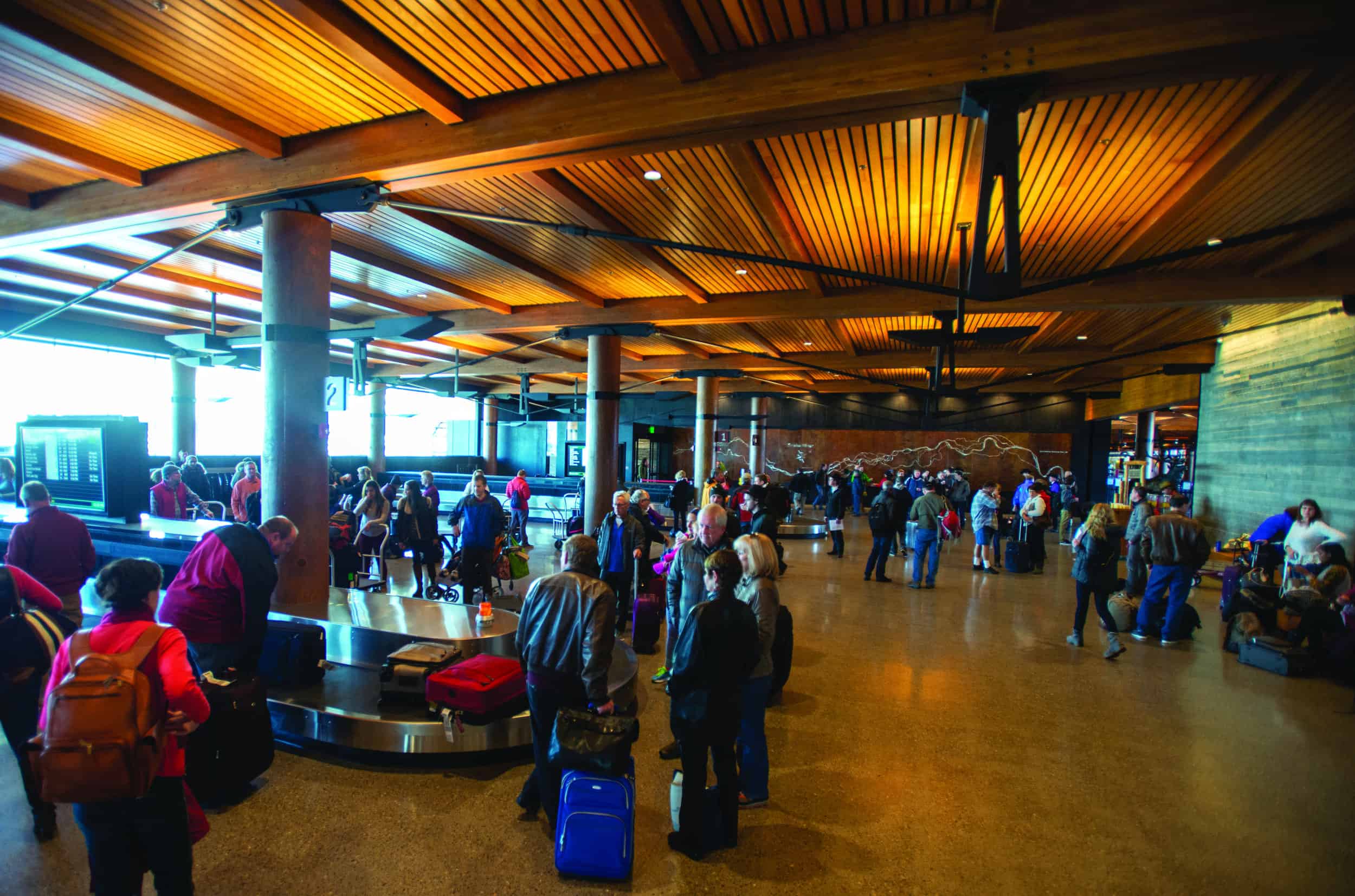
The definition of modern responsible tourism was established in 2002 at the UN World Summit on Sustainable Development, in which more than 100 heads of state and government and tens of thousands of government representatives and non-governmental organizations participated:
Responsible tourism minimizes the social, economic, cultural, and environmental impacts of travel by ensuring it is beneficial to the host community, and that it actively preserves and protects local economies, culture, and natural areas.
This definition meshes well with the mission adopted more than a decade ago by the town of Jackson and Teton County in the 2012 Joint Comprehensive Plan, which is to “preserve and protect the area’s ecosystem in order to ensure a healthy environment, community, and economy for current and future generations.” Coming up with a definition is different from affecting actual change though.
“I’ve been saying for a while that Jackson has a limit. Once we go over that capacity, the experience starts diminishing. We need to be aware of that. More isn’t necessarily better. I’m not sure everyone 100 percent agrees with me on that, but I don’t think there is any other way. We need to make a paradigm change in society. This model of never-ending growth needs to change.”
Aaron Pruzan, the owner of Rendezvous River Sports and a member
of the Sustainable Destination Management Plan’s steering committee
Tourism is a double-edged sword. More people means better restaurants, more events, and more arts, as well as more resources. Tourism drives as much as 50 percent of Jackson’s economic activity, and tax revenues pay for services that would cost residents roughly $10,000 more a year if they had to cover the costs. But more people also puts pressure on the values and experiences that are the reasons people live and vacation here. Negative impacts of increased visitation include fires left unattended in campsites (any of which could escape and turn into wildfires), parking lots at popular destinations reaching capacity by 8 a.m. forcing overflow onto roadways, and human feces and toilet paper deposited behind trees and under rocks (or sometimes not deposited behind anything and left in plain view of trails and campsites), among other issues. “I’m all for people enjoying this extraordinary place we get to call home,” says Georgie Stanley, who has lived in the area since 1996 and in Jackson since 2018. “But it saddens me when, with increased use, you see feces and wipes all over the place and near water. It’s as if [people] can’t see—or don’t care—how special our lands are.”
Crista Valentino, the interim director of the Jackson Hole Travel and Tourism Board, acknowledges that the valley is feeling the strain of too many visitors, but she is quick to point out the positives and believes that there are ways to find a balance. “The lodging tax of 2011 was established to market and promote Jackson Hole,” she says. That effort worked. … It also really bolstered the economy and allowed a lot of people to live here. But we’ve started to see the downside. Things like insufficient infrastructure, problems with how people interact with natural spaces and wildlife, and workforce shortages.” It was in response to these downsides that the tourism board allocated funds to create a destination management plan (see sidebar).
“It’s been said that we cannot block all the roads leading into Jackson and say, you can’t come in. We can’t tell Americans they can’t come to national parks or national forests. So, we have to manage our visitation.”
—Tim O’Donoghue, executive director of the Riverwind Foundation and a former director of the Jackson Hole Chamber of Commerce
This plan—the Sustainable Destination Management Plan, the results of which were shared last January—is, according to Tim O’Donoghue, executive director of the Riverwind Foundation and a former director of the Jackson Hole Chamber of Commerce, critical for allowing both visitors and residents to continue to live and recreate in Jackson without destroying the place they love. “It’s been said that we cannot block all the roads leading into Jackson and say, you can’t come in,” says O’Donoghue, who served on the SDMP’s leadership team as its sustainability coordinator. “We can’t tell Americans they can’t come to national parks or national forests. So, we have to manage our visitation.” He points to some of the efforts already taking place in Jackson to promote responsible tourism. The Bridger-Teton National Forest has established an ambassador program (funded in part by lodging tax revenues) that places volunteers in the forest. These volunteers educate visitors on the ways they can minimize their impact on the land, such as disposing of waste properly, and how to respectfully watch wildlife; they also patrol campsites to ensure campers have fully extinguished their campfires.
The Jackson Hole Chamber of Commerce established a BEST certification program to recognize sustainable leaders in the community; to date, 12 businesses have been recognized as having BEST sustainable business practices. These businesses include Brentwood Inn, which planted 300 trees, primarily willow for moose to browse on its property; Elk Refuge Inn, which reduced its dumpster use by 50 percent; Jackson Hole Airport, for its use of renewable energy; Teton Lodge Company, which diverts thousands of pounds of waste from the landfill by composting its food waste; and Hidden Hollow Apartments, which have an energy-efficient geothermal heating system that minimizes power use. These efforts add up, but have, until now, been somewhat disjointed. The hope is that the Sustainable Destination Management Plan will make them more coordinated and impactful.
“I think there are a few things coming out of this plan that are key,” says Linda Merigliano, who represented the Bridger-Teton National Forest on the SDMP’s steering committee. “One is to set up some kind of governance structure so there can be continued collaboration. People move across all sorts of boundaries when they are here, so there is not just one entity that can address all these issues. There has to be a unified strategy in place,” she says. “Secondly, we need to consolidate our messaging so it is consistent. Take, for example, wildlife messaging, especially bears. Who is giving the bear message? There are at least 10 to 12 groups out there since grizzly bear 399’s rise to prominence that have different messaging about bears.”
Aaron Pruzan, the owner of Rendezvous River Sports, a former volunteer JHTTB member, and a member of the SDMP’s steering committee, is also hopeful the plan will help ease the stress and strain of tourism on Jackson. “I’ve been saying for a while that Jackson has a limit,” he says. “Once we go over that capacity, the experience starts diminishing. We need to be aware of that. This plan is a great start. It helps recognize that more isn’t necessarily better. I’m not sure everyone 100 percent agrees with me on that, but I don’t think there is any other way. We need to make a paradigm change in society. This model of never-ending growth needs to change.”
How to recreate responsibly in Jackson Hole
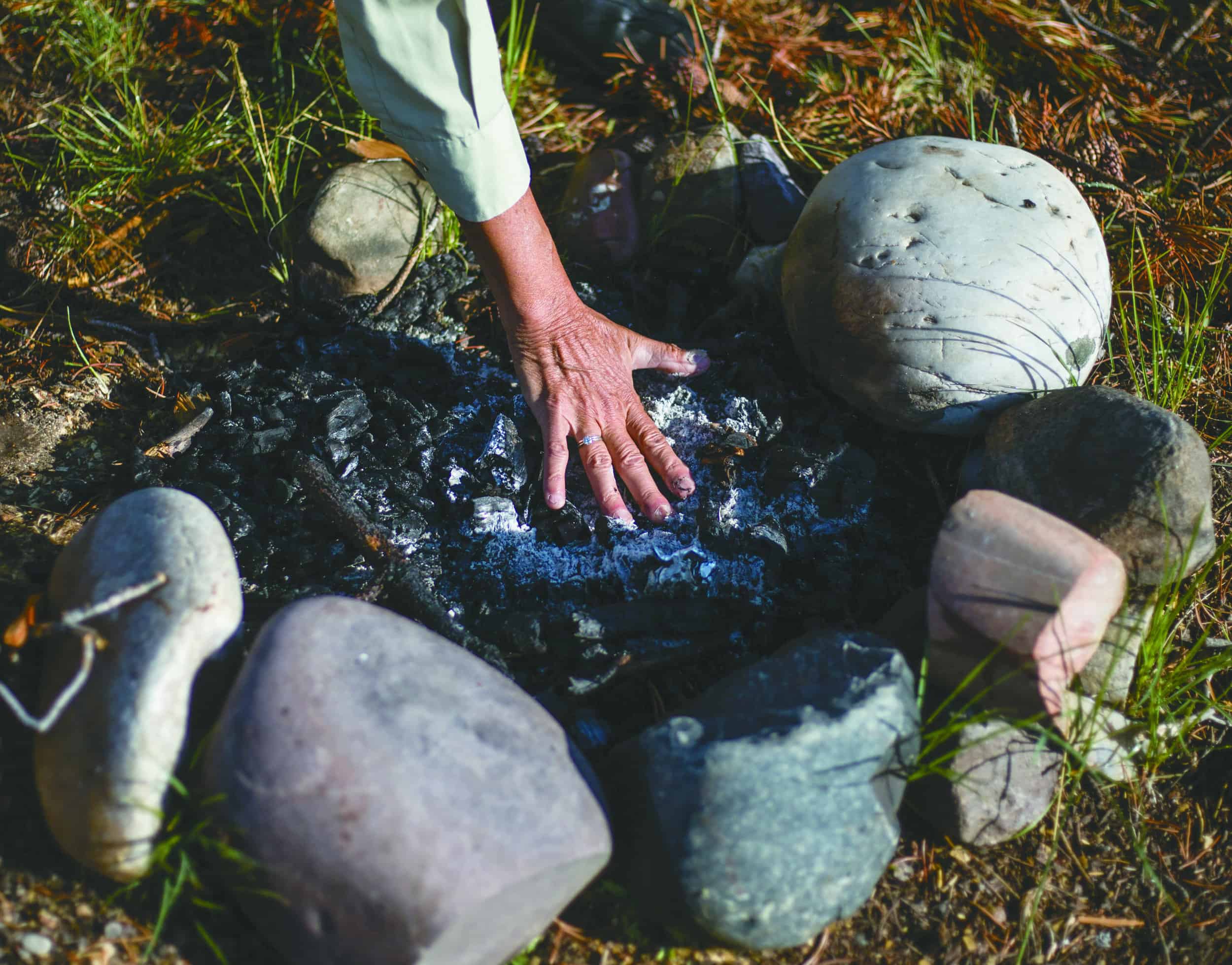
Know before you go:
Check the status of the place you want to visit for restrictions, closures, and conditions.
Plan ahead and prepare:
Do your homework so you can fit in smoothly and effortlessly to the culture and environment of your destination. Bring the right gear and have a backup plan.
Build an inclusive outdoors:
Be an active part of making the outdoors safe and accessible for all identities and abilities.
Respect others:
There is space for everyone and almost every kind of outdoor activity on our public lands.
Leave no trace:
Respect the land, water, wildlife, local communities, and cultures. Follow the seven principles of Leave No Trace. (lnt.org)
Make it better:
We all have a responsibility to sustain the places we love. Volunteer, donate, and advocate for the outdoors.
Support Jackson’s economy:
Buy local goods and frequent locally owned businesses.
Don’t add to the problem:
Minimize waste and dispose of it properly. Consider using the START bus to get around town, or rent a bike and ride the bike paths.
This list was created by the nonprofit Friends of the Bridger-Teton National Forest, btfriends.org
WYldlife
Taylor Phillips, the owner of Jackson Hole EcoTour Adventures, has been in the tourism industry for 20 years. He says Wyoming’s abundant wildlife is one of the top tourism drivers in the state, bringing people from all over the world to Wyoming to view wild animals in their natural environment. But, he says, the disconnect between the people and businesses who benefit from wildlife and outdoor recreation on public lands and the ones who actually pay for its management frustrates him. “Hunters and anglers have been the ones paying for wildlife management for more than 100 years,” he says. “But as wildlife and outdoor recreation drive the tourism industry to be Wyoming’s second largest industry, it’s time for the tourism sector to chip in.’
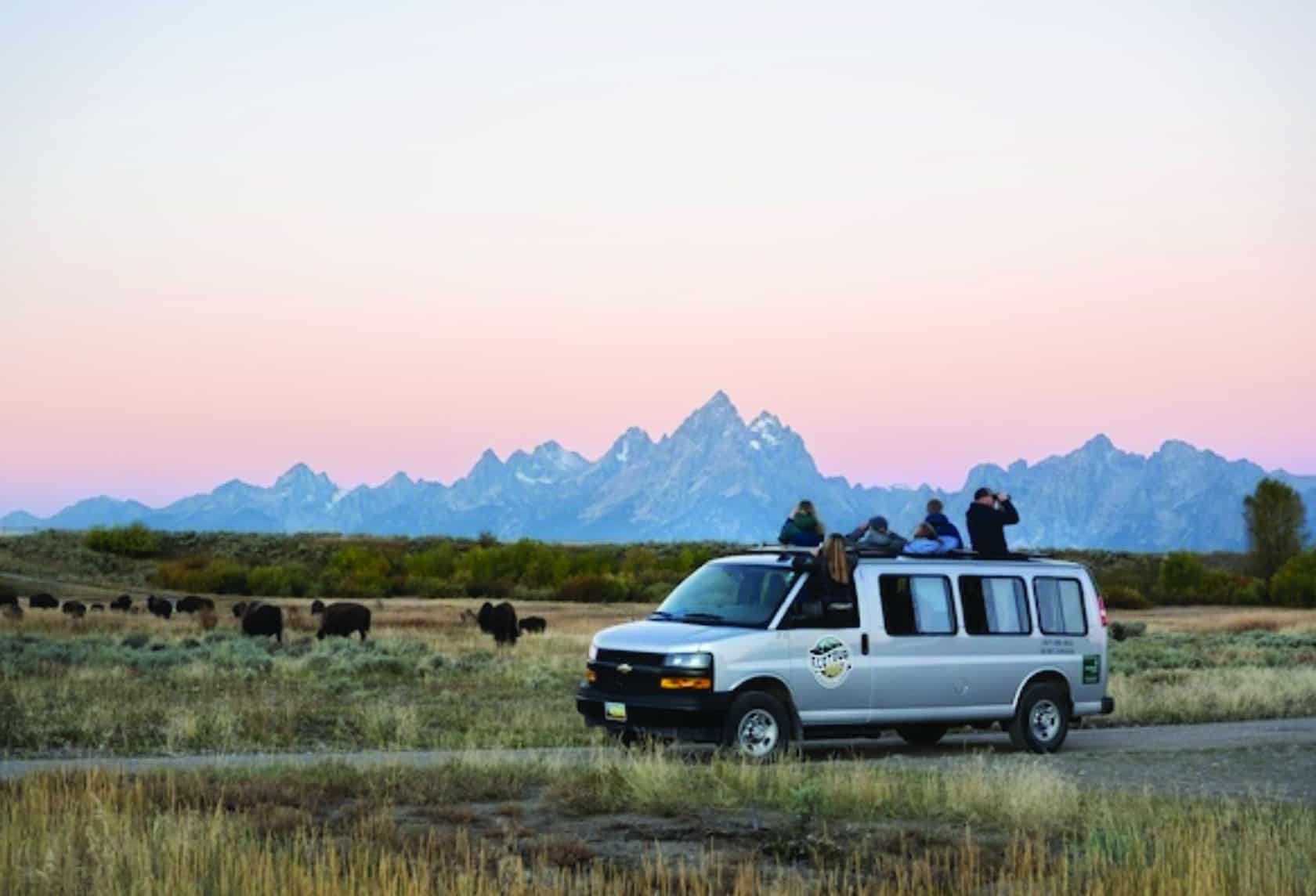
In 2019 Phillips helped launch WYldlife For Tomorrow and the WYldlife Fund to change the state’s wildlife-funding paradigm. He says the response has been outstanding, with many elected officials telling him, “It’s about time that tourists pay their fair share.” Phillips says, “For a couple of decades now, there has been talk in the legislature and other circles as to how to engage the tourism industry to give back to wildlife. We have finally cracked that nut. It no longer has to be just hunters and anglers paying in for management and conservation projects across the state.”
Wyldlife for Tomorrow is still small—it has one half-time paid employee, and Phillips volunteers his time—but it has gained support from 85 businesses and collected roughly $200,000 in the WYldlife Fund. This money has already been put toward conservation projects, including contributing $20,000 to the construction of a passageway for native cutthroat to bypass a dam on Spread Creek and $15,000 to fund a statewide sage-grouse fence inventory to help minimize fatal grouse-fence collisions. The vision is that the organization will eventually have staff across the state and fundamentally change how wildlife management is funded.
Jackson Hole Sustainable Destination Management Plan
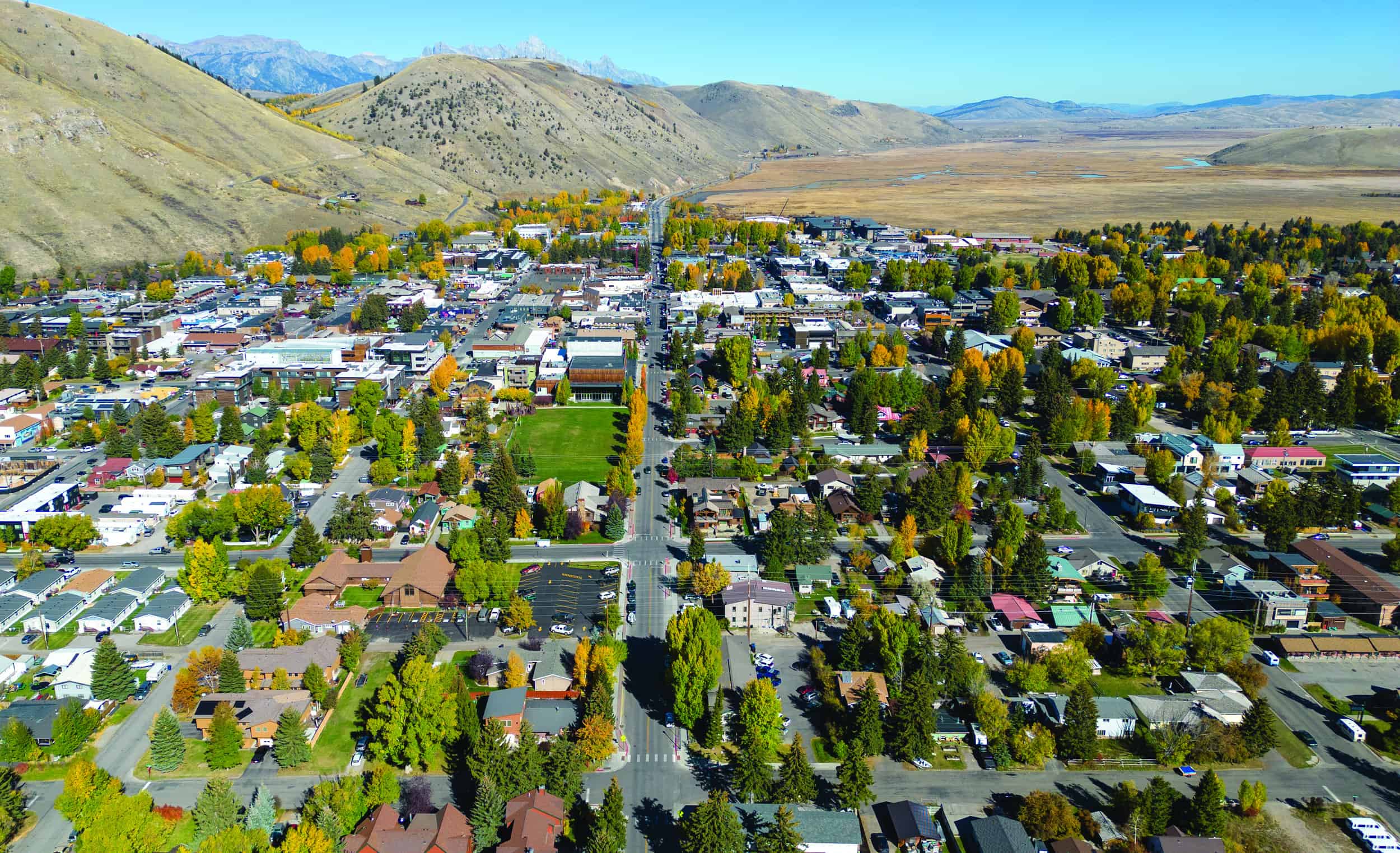
Wyoming collects a 5 percent lodging tax on every visitor’s hotel, motel, and rental property stay. Three percent of that tax is managed by the Wyoming Office of Tourism, and the remaining 2 percent stays in Teton County. The Town of Jackson and Teton County together get 40 percent of this money to mitigate the impacts of tourism on infrastructure and services; the remaining 60 percent funds the Jackson Hole Travel and Tourism Board, which, since 2011 has worked to grow tourism to the area during the off seasons and, more recently, to balance this growth with the preservation of the valley’s natural capital and community wellbeing. Between July 2021 and June 2022, Teton County collected $6.884 million in lodging tax revenue; $4.1 million went to the JHTTB, and $2.8 went to the Town of Jackson and Teton County combined.
The JHTTB uses its 60 percent for destination marketing, tourist education, events, other tourism-related initiatives as outlined in Wyoming State Statutes, and, increasingly, messaging and programs that seek to educate the increased number of visitors. In 2022, among the latter was a Sustainable Destination Management Plan.
Guided by consultants from George Washington University International Institute of Tourism Studies and Confluence Sustainability as well an 18-member steering committee composed of representatives of local government, land agencies, non-governmental organizations, and businesses, JHTTB released its management plan in January. It establishes an ambitious set of goals and action sets. Implementation began this spring with the hiring of a destination management coordinator and establishing a new steering committee to enforce the plan.
Jackson isn’t the first to embark on destination management, and the JHTTB’s Valentino says the community has been guided and supported by places like Aspen and Vail, Colorado, and Taos, New Mexico, all of which are further along in the process. New Zealand is in the process of adopting a nationwide destination management plan. Ultimately, such efforts are hoped to bring a holistic response to the everlasting question of how to avoid loving the places we care about to death. Read the entire 75-page plan at visitjacksonhole.com/locals. JH

